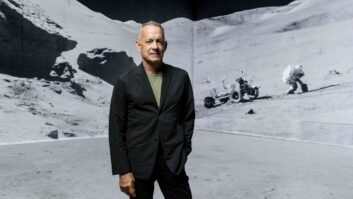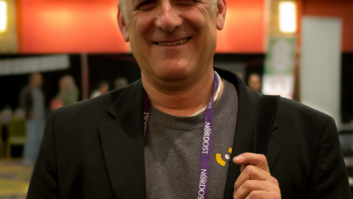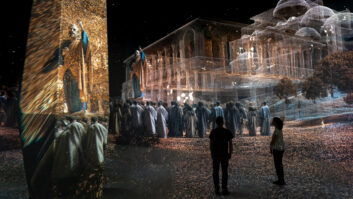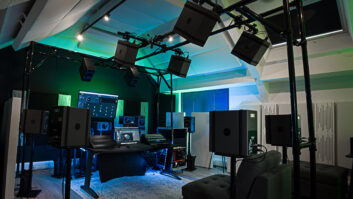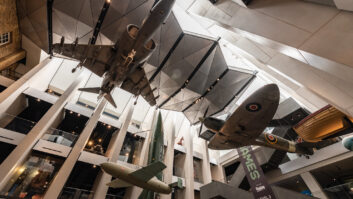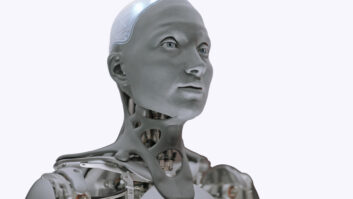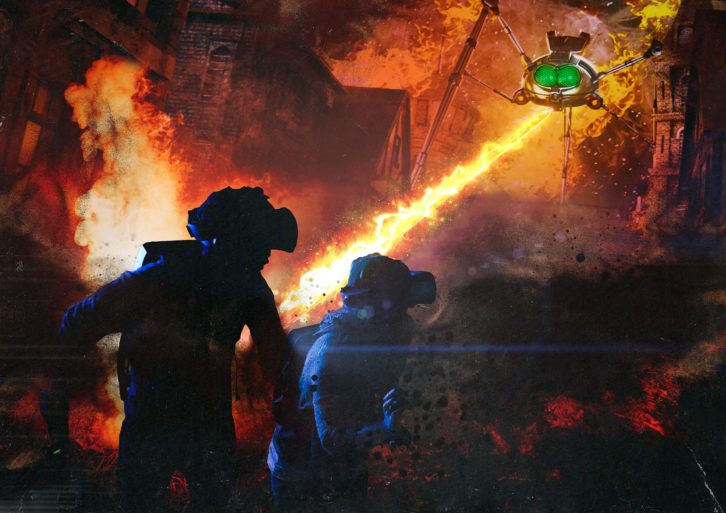
Following the incredible success of Jeff Wayne’s Musical Version of the War of the Worlds, which first began touring in 2006, an immersive version of the show has landed, promising to offer an even more engaging experience for participants. The challenge, however, was how to develop something new from a story that has been transformed into a radio drama, a TV series and a film and even a game as well as a stage show.
The aim, therefore, was to come up with something new and something that would truly engage participants, taking them back to the late 19th century as aliens invade Earth.
Carl Guyenette, creative director of the show, explains: “We locked ourselves into a room and listened to the album and worked out how best to translate each song in to an exciting tech and theatre experience. It’s important to innovate and try new things in every area so people wouldn’t know what to expect and will keep the element of surprise.”
The experience itself takes place in a 22,000sqft warehouse divided into 10 experience rooms, each of which employs different forms of multi-sensory technology to heighten the experience. Participants are taken to classic locations from the War of the Worlds, including Horsell Common, George’s House and Victorian London, where they are met with live actors who interact with audience members and guide them on their journey. Alongside this, AR, VR, volumetric holograms and an array of state-of-the-art technology takes audience members from being passive viewers of the action to active participants. This combination also means that each show will be unique as the actors are guided by the audience and their reactions.
Guyenette adds: “The album artwork is what lives within people’s visual memories of the music so we used it as a storyboard and an art pallet. The album itself has been a horror and scared people with different revolutionary synth sounds in the 70s so we’ve kept with that tradition and made the show an exciting fright-fest.
“We use ambisonics experimentally for immersive 3D audio and haptics throughout so the audience can really feel the sound and the iconic music.”
One of the most impressive elements of the show is a 20sqft room fitted with 52 high-speed motion-capture cameras. Participants don VR headsets and the social VR platform allows them to see other audience members, represented as characters from the 19th century.
This was a particular highlight for Guyenette: “The most impressive element [of the tech setup] is the free-roam motion capture environment we have for 12 people to walk around in virtual reality socially.
“I’ve also had great fun playing with the programming of the motion simulators we have, as they are connected to a procedural sea simulation creating a genuinely realistic feel of being on a boat in VR.”
In this scene, the audience is seated in a wooden boat that moves and pivots based on the movement of a water simulation.
Much of the work was carried out internally by Guyenette and his creative team, however they also worked with Immersive for the holograms and domes, and Projection Artworks for the bar projections; VR, AR, full domes, motion simulators, depth sensors, volumetric capture, photogrammetry, haptics, projection mapping and ambisonics to name a few.
Guyenette concludes: “We’re living in the experience economy and people are always going to want something that’s new. Going to this event is similar to going to the cinema in the late 1800s, it was a true spectacle of engineering, which is what we’ve aimed for.”

